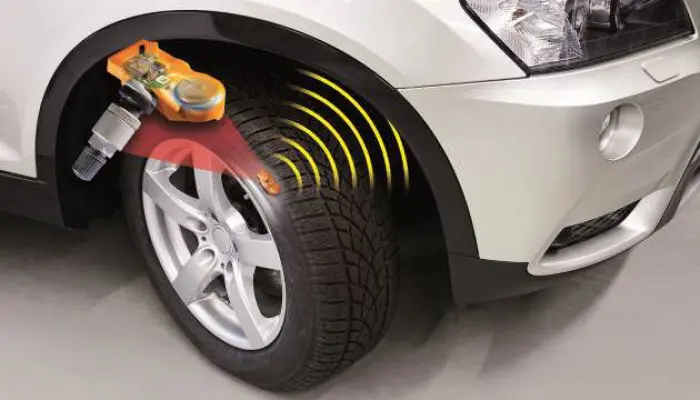Tire pressure monitoring is a key element of vehicle safety and efficiency. Pressure monitoring systems can be part of a car's standard equipment or offered as an optional feature. Generally, they are divided into two main categories.
Indirect Monitoring Without Tire Sensors
Systems of this type are known as TPMS (Tire Pressure Monitoring System). The main characteristic of this approach is the absence of direct pressure measurement in the tires. Measurements are carried out through the ABS system, which analyzes the rotation of the wheels.
Information from the ABS system is sent to the central control unit. This unit compares the data on wheel rotations with the actual distance traveled. When the pressure in a tire decreases, its diameter reduces, leading to more rotations needed to cover the same distance. The TPMS detects these changes and alerts the driver.
The advantage of this system is its cost-effectiveness and mechanical reliability since it does not include additional sensors. However, its accuracy and informativeness are not optimal: the system does not show the exact pressure and only activates when there is a significant drop in pressure (by 30-40%).
Direct Control with Sensors in the Wheels
This method is more informative and includes:
- A control unit with a power source, transceiver module, and reading device;
- A signaling device;
- Four sensors, installed one in each wheel.
Sensors based on piezoelectric or strain gauge elements change electrical resistance depending on tire pressure. The control unit processes this information and transmits it to the driver.
Standard Tire Pressure Monitoring System The reliability of the system is high, but there can sometimes be issues with the receiving devices installed in the wheel arches. Due to their proximity to the road surface, they are susceptible to moisture and dirt.
Aftermarket Systems
These devices are offered as separate accessories and are suitable for any vehicle. They are divided into three categories:
- With basic signaling – include a control unit and four sensors. Equipped with LEDs that activate when the pressure drops.
- External with precise measurement – offer higher reliability. Equipped with sensors, an LCD display, and a central unit. The screen displays the exact pressure values.
- Internal with precise measurement – similar to the previous type, but the sensors are installed inside the wheels. They are more expensive but provide accuracy and theft protection.
Each of these types has its unique features and advantages, allowing car owners to choose the optimal option according to their needs and budget. For example, systems with basic signaling are an economical solution for those looking for a simple way to monitor pressure without additional functions. On the other hand, external and internal systems with precise measurement offer more advanced monitoring capabilities, including accurate display of tire pressure, which is especially important for drivers who aim for maximum safety and efficiency of their vehicle.
Aftermarket Tire Pressure Monitoring System
Depending on the requirements for accuracy and reliability, as well as financial capabilities, you can choose a suitable tire pressure monitoring system for your car.
